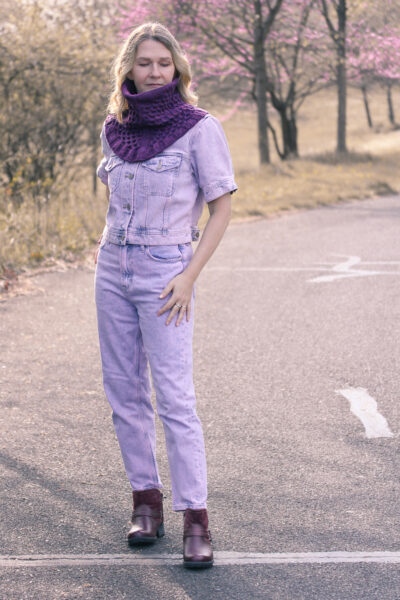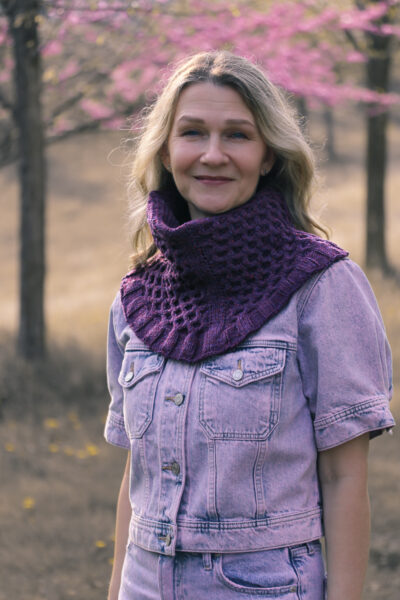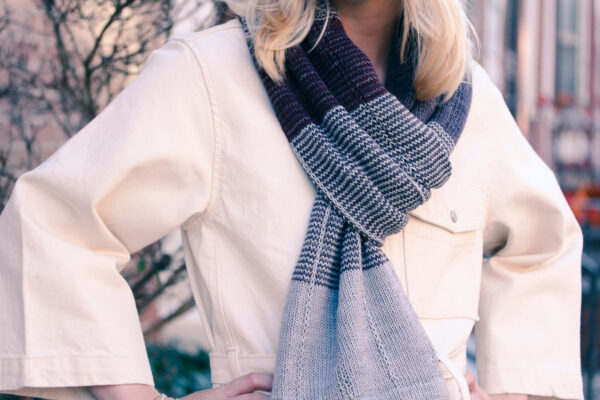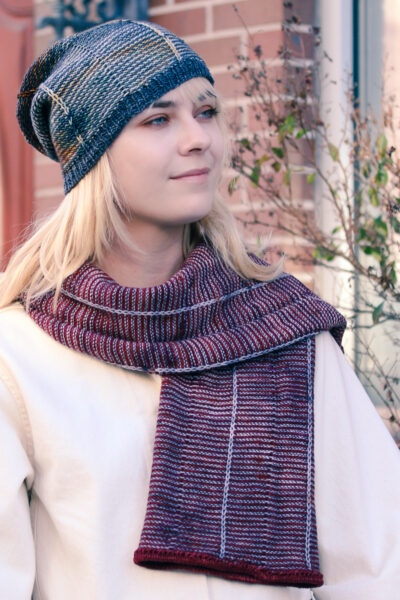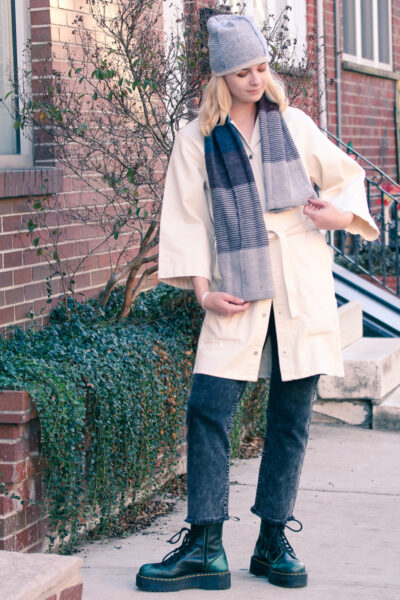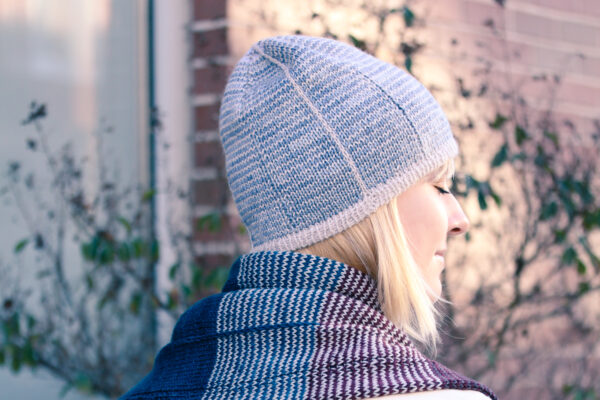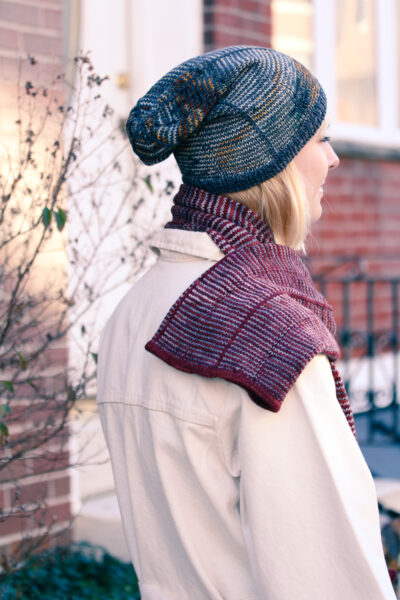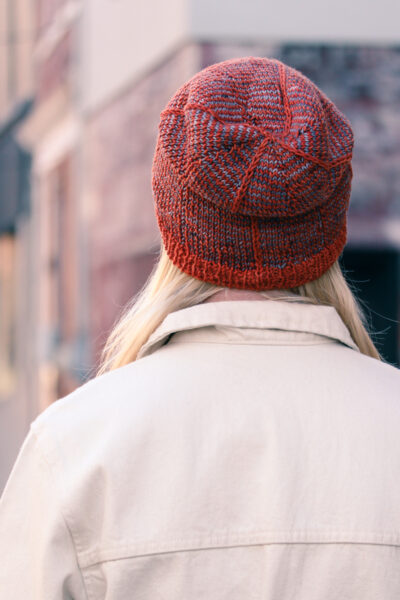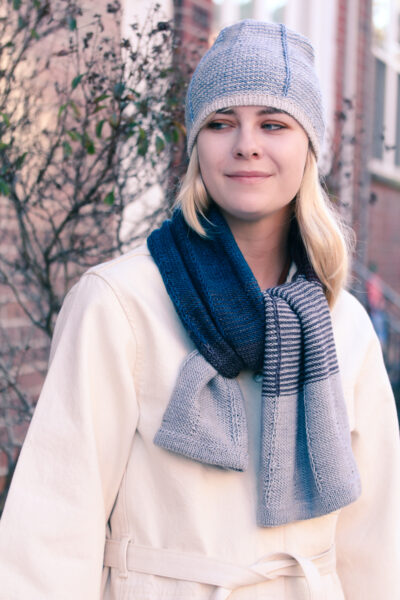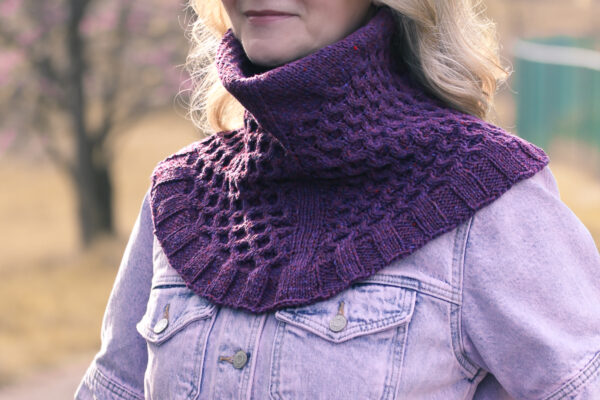
Deeply textured honeycomb cables decorate this seamless double layer bandana cowl. Begun flat and then joined in the round, the shawl structure shows off the beautiful stitch pattern, with all the convenience of an easy to wear cowl.
Construction: Honeydana is knit seamlessly from a topdown provisional CO and begins like a triangle shawl, worked with elegant tubular edges. Once a comfortable neckline circumference is reached, stitches are joined in the round and worked like a cowl, with a honeycomb cable pattern on the body and continued shaping to create the bandana front. The lower edge is finished with a sculptural ruffle. Pull the neckpiece over your head, tuck in the top, and enjoy your comfortable, stay-in-place bandana cowl.
Techniques & Skills Used: provisional CO, cable CO, knit/purl, increasing, cables, working in the round. This pattern contains fully written instructions, with a chart also provided for the cable repeat.
Size: 32” circumference at bottom edge and 16” tall.
Yarn: Green Mountain Spinnery Mewesic (100% fine American wool; 180 yards/165m/58g), sample shown in Purple Rain 8951; 2 skeins, or approximately 360 yards of DK weight wool yarn. Choose a rustic or sturdy yarn to enhance the structure of the cowl.
Other Materials: US 6 (4mm) 24” and 32” circular needle or size to match gauge; Stitch markers (4); Cable needle; Yarn needle.
Gauge: 26 st and 30 rounds/4” in honeycomb stitch pattern, and 22 st and 30 rows/4” in stockinette stitch, after blocking. Gauge is not critical for this project, however a different gauge may result in a smaller or larger finished scarf, and different yardage requirements.
See it on Ravelry or on Payhip, to read more or purchase the pattern.


